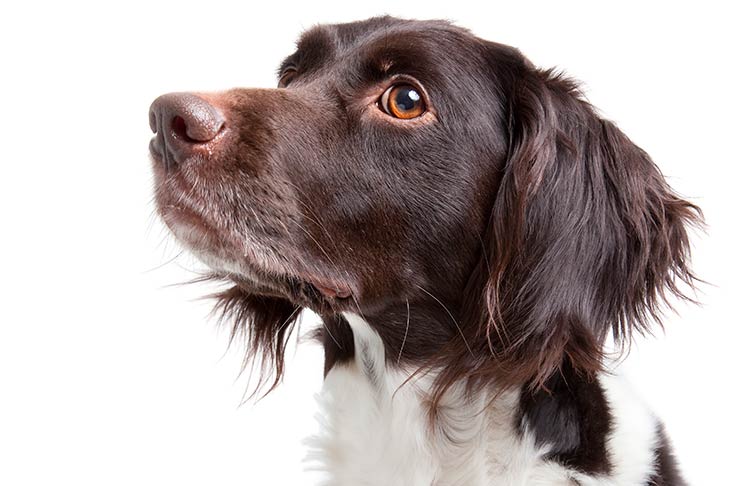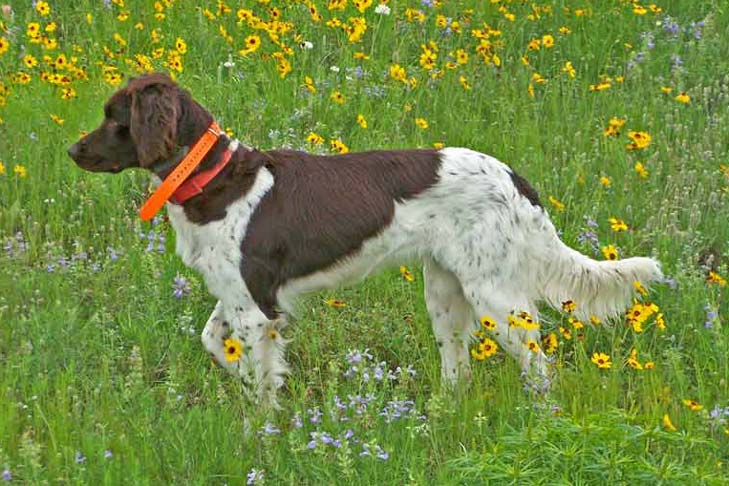The origins of the Small Munsterlander can be traced back to the mid-nineteenth century. The breeding of new German Pointing Dogs began following the change in German hunting law, an increase in the number of hunters and hunting enthusiasts, and the systematic cultivation of the game stock. According to legend, long-coated ‘Wachtelhunds’ (German Spaniels) were popular in the Munsterland region around 1870. These dogs were good at pointing, had great scenting ability, and could also retrieve. In 1906, a well-known poet named Hermann Löns took care of the problem by publishing a public appeal in the magazine Unser Wachtelhund asking for information on the remaining specimens of the red Hanovarian Heath Hound. Instead, he and his siblings discovered a pointing Wachtelhund on the farms that they named ‘Heidewachtel’.
Aside from the Löns brothers, well-known dog aficionados like the Baron of Bevervörde-Lohburg worked hard to establish a good breeding stock in various areas. Mr. Heitmann, a Burgsteinfurt teacher, was successful with his line breeding. Several other breeding families known as the ‘Dorsten type’ arose in Westphalia in the years that followed. The ‘Verband für Kleine Münsterländer Vorstehhunde’ (Club for Small Munsterlander Pointing Dogs) was finally established on March 17, 1912. This group stated its goals at the time as follows: ‘The Club pursues the objective of promoting the purity and true breeding of the long-coated little pointing dog that has been bred in the Munsterland for many decades.’ At the time, the absence of set breed features hampered both breeding and Club operations.
Beginning in 1921, breeders began to adhere to the breed standard developed by Mr. Friedrich Jungklaus. Nonetheless, the true origin of dogs during that time has not been verified.
The Small Munsterlander was created to accomplish a variety of hunting-related duties using instinct rather than training. The breed is intended to pursue prey of all sizes, both furred and feathered; to point out game to the hunter; to retrieve shot game; and to track wounded wildlife. All of this had to be done in tight cover in the field or woodland, as well as in the water. Furthermore, the breed was created to be a good family friend.








 Health
Health Grooming
Grooming Exercise
Exercise Training
Training Nutrition
Nutrition